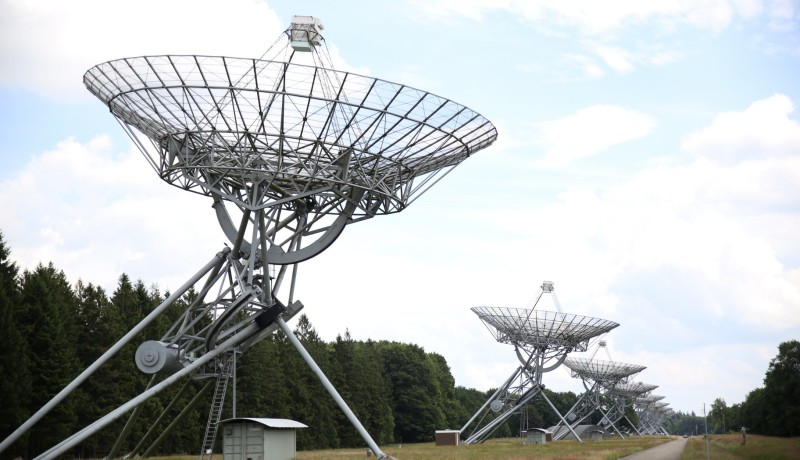The most powerful supercomputer in the Netherlands
on

Every day thousands of enormous explosions take place in the universe: the so-called 'fast radio bursts'. To gain a better understanding of these gigantic explosions, ASTRON, the Dutch institute for radio astronomy (a part of NWO) has installed new high-speed cameras on the radio telescopes in Westerbork. These cameras have now been provided with new 'brains': the most powerful supercomputer in the Netherlands.
Radio flashes
Fast radio flashes are extremely bright flashes in the radio spectrum that have travelled billions of light years before they reach the Earth. They were discovered some 10 years ago, but what causes them or where they are from is still largely unknown. Because these flashes last only for a fraction of a second, their observation is very difficult. Currently only 25 fast radio flashes have been observed.
Apertif
This will now change with Apertif, the new set of cameras that has been installed in the dishes of ASTRON’s synthesis radio telescoop in Westerbork. The Westerbork array, with the addition of Apertif, will have the widest field of view of all the sensitive telescopes in the world. With one image capture a large part of the sky an be examined very quickly. In order to find the fast radio flashes and pulsars it is necessary for the telescope to process 20,000 captures per second.
Computing power
The telescope requires a lot of computing power for this, and that is why one of the fastest supercomputers in the world was designed and built. A remarkable feature of this new supercomputer is that it is built around video processor chips from the gaming industry. Gamers use computers with very powerful video processors: the GPUs. These chips are now used for the first time to process the data from a telescope. The supercomputer contains two hundred GPUs, which can process four terabits per second of data. With a computing power of 2 petaflops this is the most powerful GPU supercomputer in the Netherlands. The supercomputer will teach itself to discover the space flashes in the thousands of recordings from the telescope. These could also be examined manually, but this is an enormous amount of work and also prone to mistakes. The computer will, as it discovers more and more flashes, learn to better recognise the flashes. The expectation is that one fast radio flash per week will be discovered, the location of which can subsequently be determined exactly.


Discussion (0 comments)